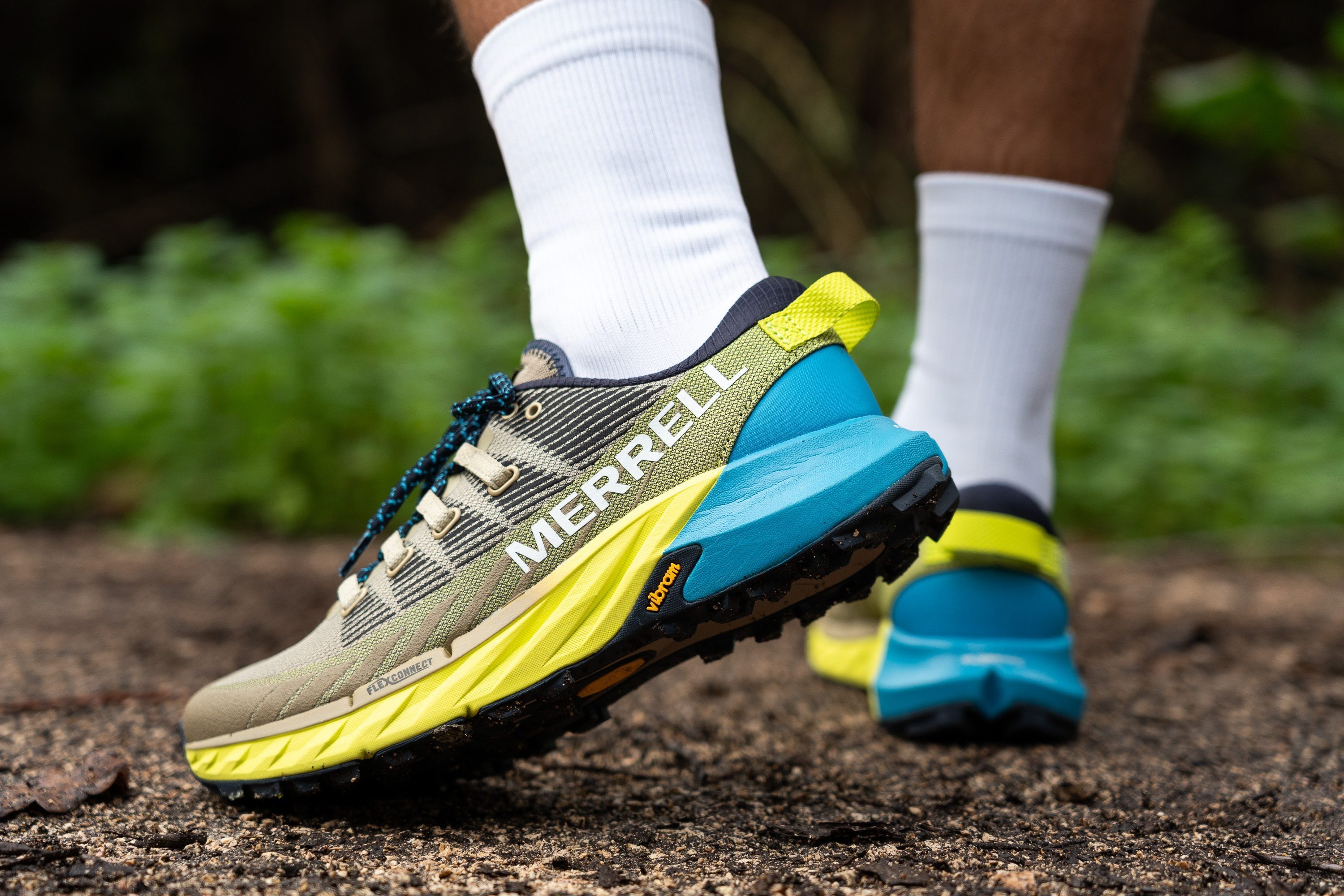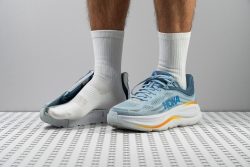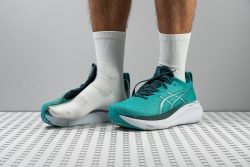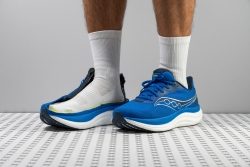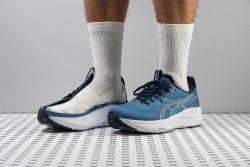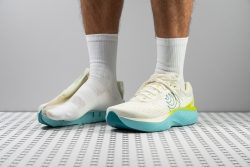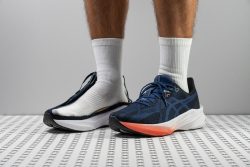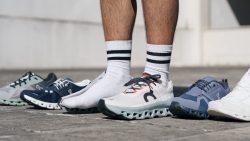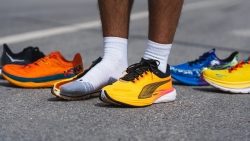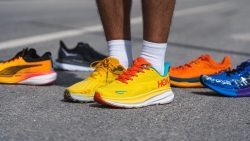7 Best Running Shoes For Heavy Men in 2025

We buy shoes ourselves. We earn commissions when you buy through us, at no extra cost. Why trust us
Running shoes for big guys have loads of cushion to keep the feet protected. And more importantly, they are durable. Whether you're running on pavement or on the trails, these shoes can take a beating.
Choosing from a bunch of running shoes for big guys can be a demanding task. To help you out, we put them under the microscope (figuratively and literally) and tested each of them rigorously. Then, we filtered them and only selected the best ones.
We also wrote a guide on what to pay attention to when looking for running shoes for heavy runners. What type of cushioning works best, how durable should the shoes be, how high the platform should be to offer enough impact protection, all the details are here!
How we test running shoes for heavy men
To keep everything as bias-free as possible, we buy all the shoes we examine with our own money. And to be objective, we run and use an independent shoe lab.
On top of these, we also:
- Get the big guys among us testers to run the show to provide an authentic review from their POV.
- Cut the shoes open to assess what's inside. We evaluate every little detail that we encounter.
- Measure each part and test the shoe's shock absorption, durability, stiffness, breathability, and other features relevant to heavy runners. We present both our personal experiences while field-testing the shoe and our lab data in our in-depth reviews.
Best running shoes for heavy men overall
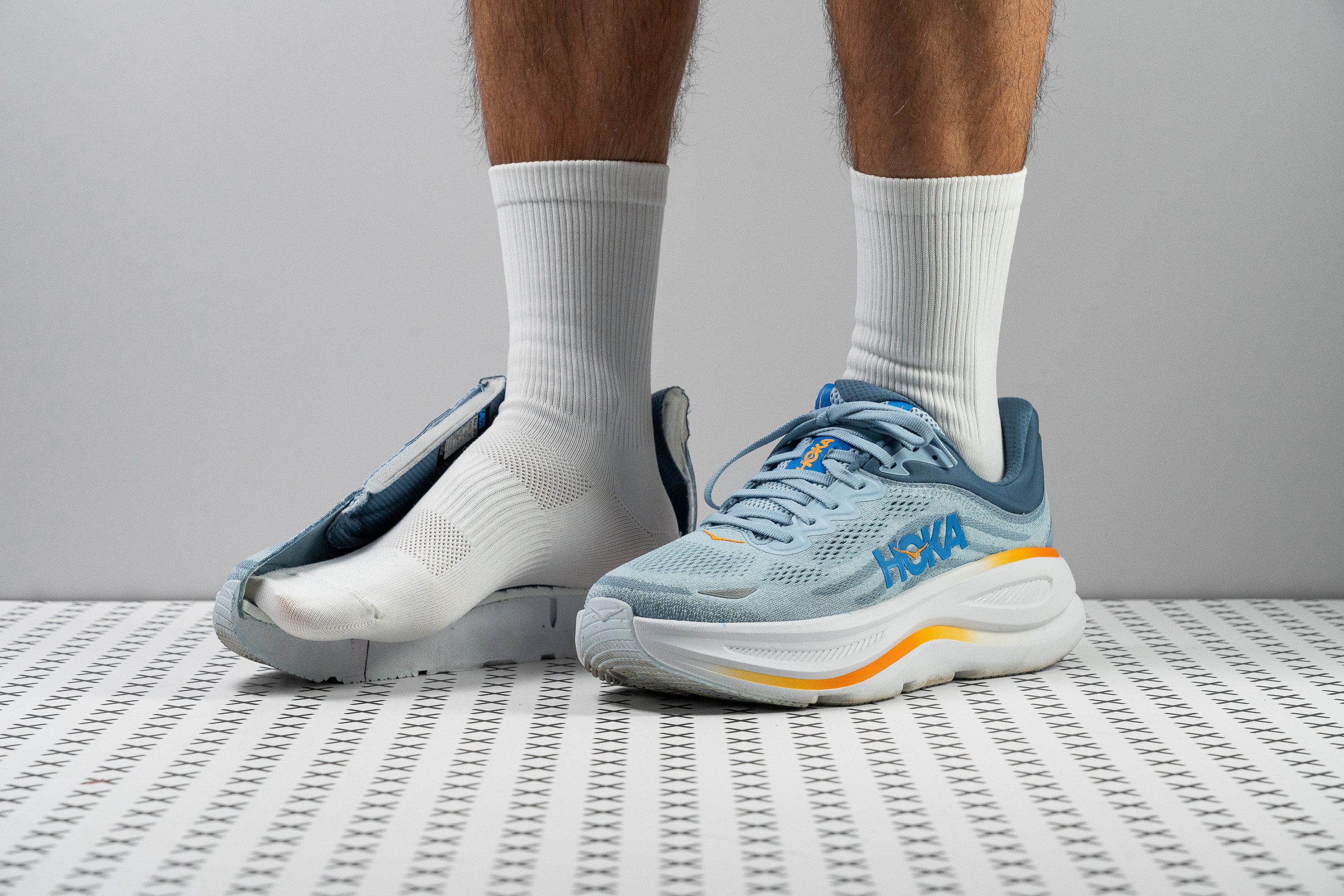



















































What makes it the best?
The Hoka Bondi 9 was a joy to test with maximum cushioning underfoot, proving its comfort and steadfast support in and out of the lab. It’s a shock-absorbing powerhouse that is balanced by subtle stability components, delivering a balanced and surefooted ride, making it our top choice for heavier runners.
The pillars of support consist of a wide platform and midsole sidewalls that increase rigidity. This design enhances support by resisting excessive movements and maintaining our foot alignment. Our manual assessment confirms its stiffness, scoring an impressive rating of 4/5 in torsional rigidity. Our calliper confirms that it’s indeed spacious, measuring 123.1/100.9 mm, compared to the average of 114.3/90.8 mm.
Bondi 9 protects the joints of all types of runners with a taller-than-average stack, measuring a sky-high 41.3/32.2 mm. We proved in our shock absorption test that the foam itself is plush and leg-saving, with above-average scores of 146 SA in the heel and 133 SA in the forefoot.
Despite its oversized build, we were surprised that its toebox runs narrow. Therefore, we can’t recommend Bondi 9 to those with broad feet.
Pros
- Endless cushioning
- New supercritical EVA midsole
- Amazing step-in comfort
- Doubles as a walking shoe
- Stable for its height
- Built to last
- Excels at slow-and-steady paces
- Well-designed heel collar
- Lighter than v8
Cons
- Not for wide feet
- Still feels heavy and clunky underfoot
- Drop measurement differs from stated
- Non-gusseted tongue
Running shoes for heavy men with the best shock absorption
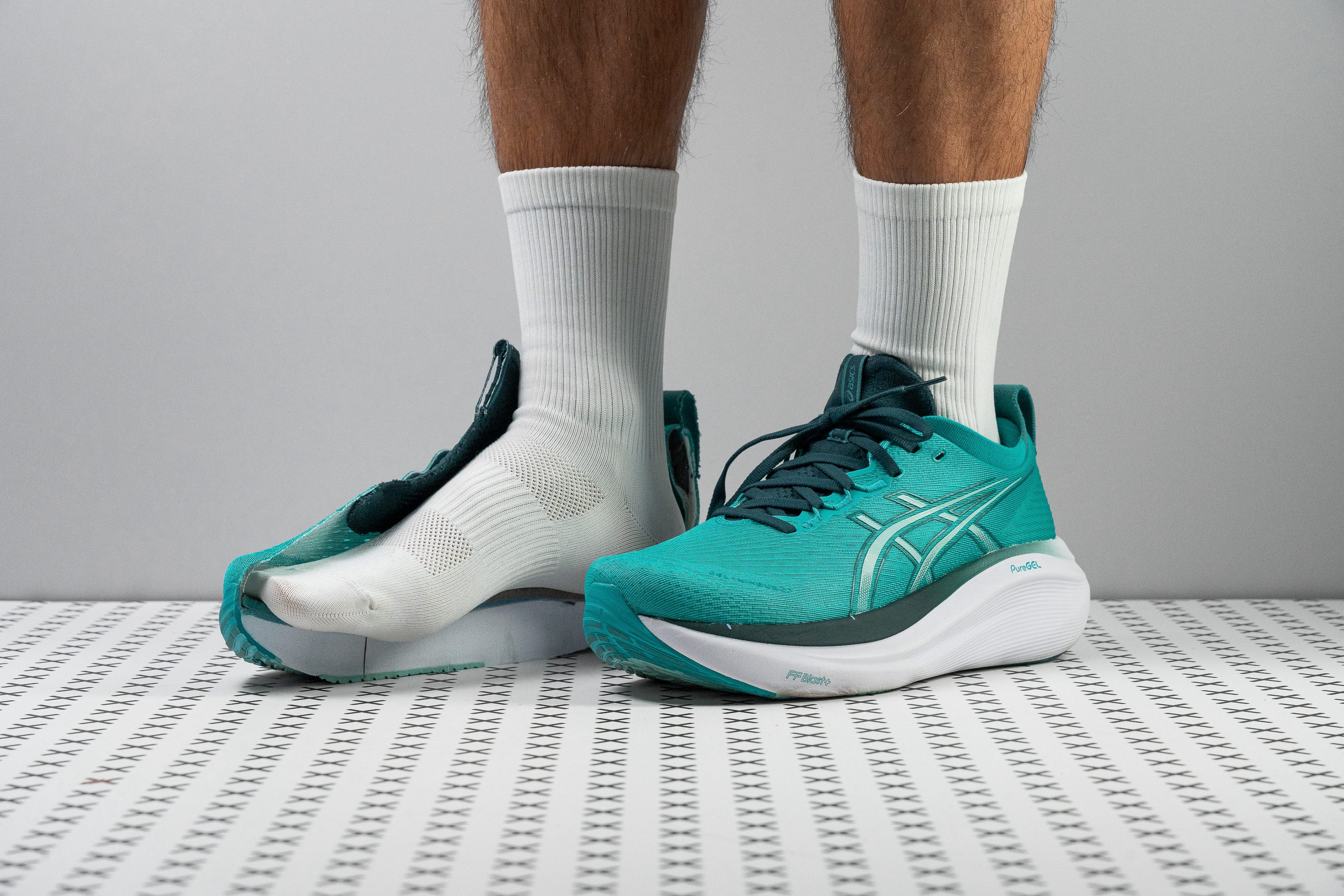


















































What makes it the best?
The ASICS Gel Nimbus 27 took our runs to the next level with its maximum traction, maximum cushioning, and solid stability. Our feet couldn’t deny its lasting comfort and support, making it stand out in the lab with the best shock absorption for heavier runners.
Nimbus 27 features bottomless cushioning, with a stack height of 42.7/34.4 mm, which ensures it won’t bottom out for heavier runners. Its shock absorption level is out of this world, with a solid 136 SA rating in both the heel and forefoot, effectively taking impact away from our joints.
Surprisingly, the ride feels stable despite its height, ensuring proper form even as fatigue sets in. The unexpected support comes from the broad base that highly resists twists, with a 5/5 score in our assessment. Our calliper reveals a generous 119.5/99.8 mm landing space, more than enough width to find our footing securely.
The Hybrid ASICSGRIP outsole packs a lot of bite into it, and we had no instances of losing control even when the streets got wet. Testing for traction in the lab, it blew us away with its elite 0.84 friction score, meaning it offers 78.7% stronger grip than average!
We can’t have it all, and the Nimbus 27 sacrificed speed for all the comfort it brings. Those who don’t want a flat ride should find a more responsive pair.
Pros
- Even more foam underfoot!
- Premium-feel, breathable upper
- Fantastic stability
- Improved toebox with extra wiggle room
- Flexible knit tongue
- True maximalist comfort for recovery runs
- Amazing heel lockdown
- Top-tier grip
- Top-tier grip
Cons
- Feels bulky and heavy
- Minor price increase
- Lacks energy return
- Minimal outsole coverage
Running shoes for heavy men with best energy return
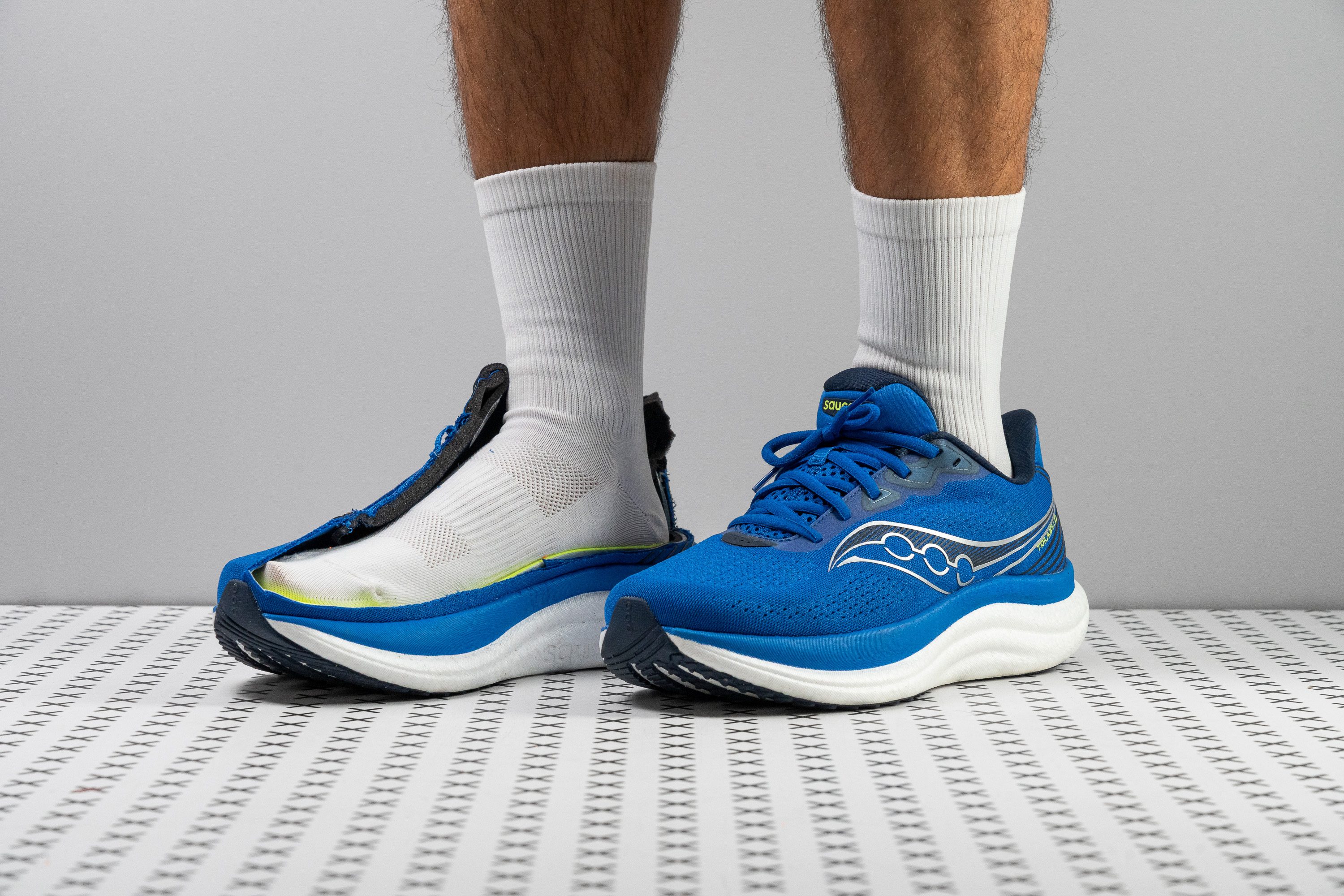












































What makes it the best?
Countless hours in the lab and on the pavement confirm the Saucony Triumph 23’s position as the shoe for heavier runners with the best energy return. It offers unparalleled sky-high cushioning that feels surprisingly light and bouncy with every stride—a rare trait among maximalist trainers. Its strong rebound is impressive given its top-tier shock absorption.
Triumph 23 is meant to be a daily trainer, which is why its power output blew us away. We tested the foam and recorded impressive energy return scores of 67.6% in the heel and an outstanding 71.2% in the forefoot! Despite its height, we’re impressed by how agile it feels through its low 9.6 oz (272g) figure.
Its abundance of plush padding surpasses generosity, offering a height that exceeds race-legal limits and ranks high in our roster. The midsole, towering at a substantial 42.3/32.3 mm stack, offers premium comfort and impact protection across all distances and footstrikes.
Speaking of impact protection, we measured very impressive shock absorption scores of 149 SA and 136 SA in the heel and forefoot, respectively. Few shoes can match how much Triumph 23 reduces the load on our legs, and the lab figures speak for themselves.
However, it has a steep price of £170. There are many shoes in the market that feel bouncy and comfortable enough at a lower price range.
Pros
- Amazing energy return
- Lighter than previous version
- Huge cushioning for long runs
- Wide platform makes it really stable
- Full PWRRUN PB midsole
- Premium sockliner
- Durable build overall
- Versatile enough for daily wear
- Consistent performance in cold temps
- Excellent grip
Cons
- Price increase
- Ventilation could be improved
- PWRRUN PB may feel firm to some
- Bulkier build limits agility
Best stability running shoes for heavy men
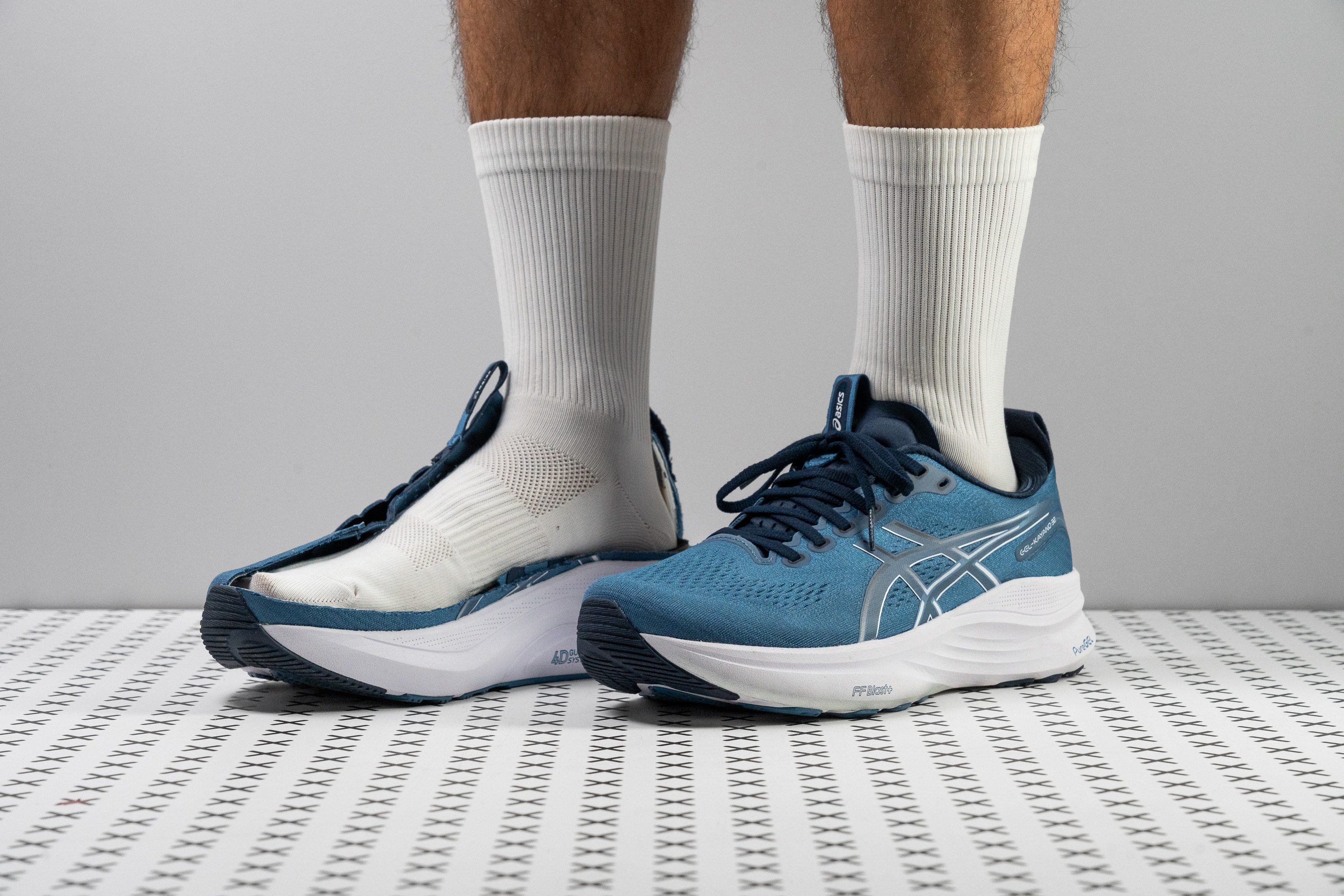













































What makes it the best?
Gel Kayano 32 has a substantial stack height packed with the plush FF Blast+ ECO foam to cancel out landing impact in our runs. Despite its skyscraper build, it holds supportive features to ensure surefooted strides for all types of runners. Our runs and lab tests confirm it's the leader of the stability game for big guys.
GK32 proves that a maximalist can be stable through its 4D Guidance System and vast platform. It integrates a softer foam under the arch and adjusts to our feet for custom protection. The massive midsole provides reassurance for safe landings, accommodating even the widest feet with an extra 5.5/6.5 mm allowance in the forefoot and heel vs. average.
The FF Blast+ ECO gives a homey feeling. Its massive 39.9/30.6 mm stack sits well above normal to ensure a forgiving ride for heavier runners. Testing for shock absorption, both the heel and forefoot reduce the forces of road running vs. average, with high scores of 133 SA and 116 SA, respectively.
Beneath the cushion, its outsole promises durability by making the rubber 4.5 mm thick. It offers exceptional grip for added control, proven by its top-level 0.84 score in our traction test.
However, GK32 shines best during laid-back runs. With low energy return scores in the lab, it may disappoint those seeking an exciting ride.
Pros
- Amazing shock absorption
- Plush and breathable upper
- Made to last
- Dependable for most pronators
- Heavy-duty outsole with excellent grip
- Stable as a table
- Pillow-soft heel padding
- Improved fit
- Excellent build quality
Cons
- Not for soft-foam lovers
- Bad energy return
- Overpriced in Europe
Best running shoes for heavy men for wide feet
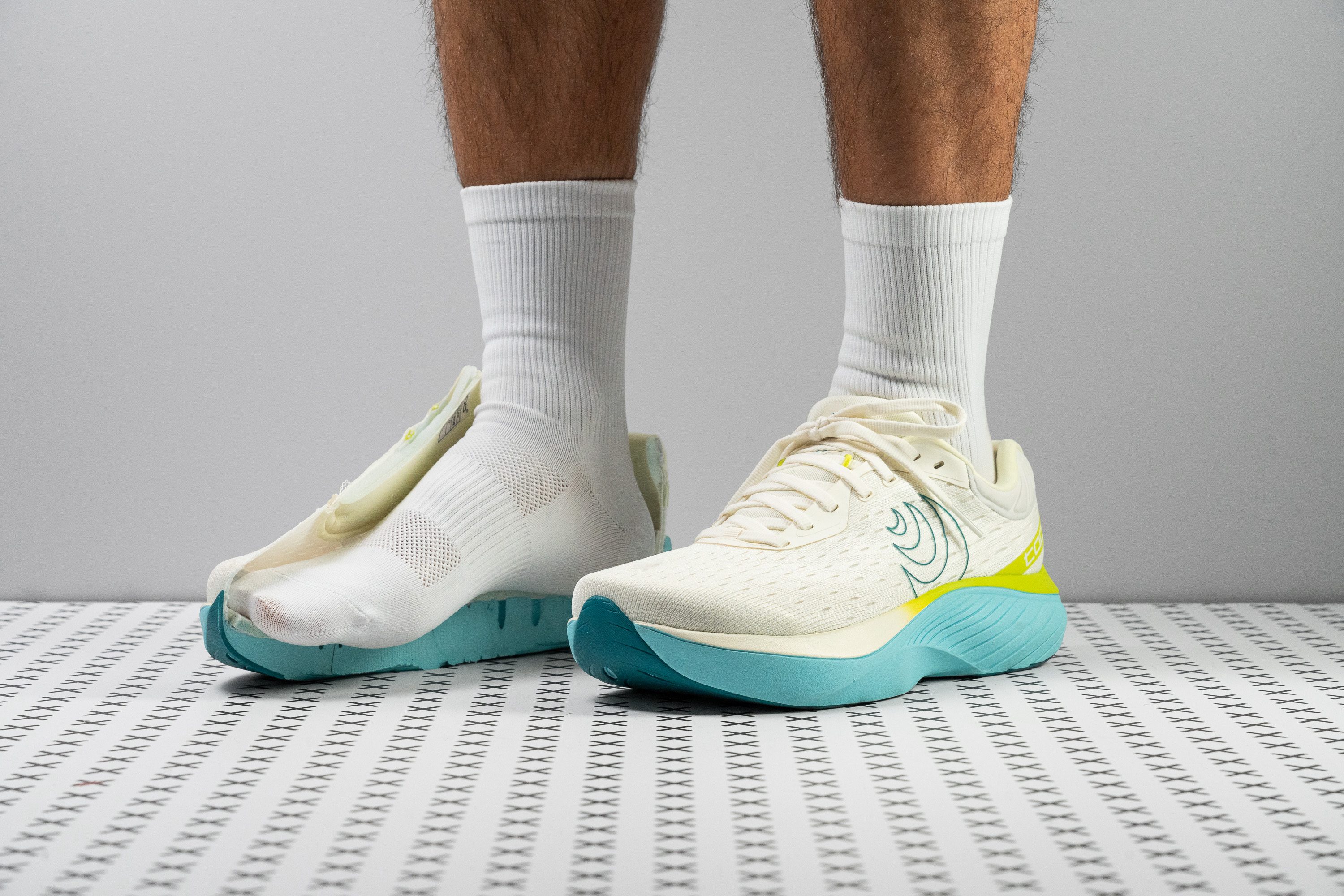

















































What makes it the best?
After rigorous testing in and out of the lab, we've identified the ultimate running shoe for heavier runners with wide feet: the Topo Atmos. Balancing comfort and support seamlessly, it guides our strides subtly, promoting a natural gait while serving exceptional impact protection and a fuss-free fit.
At its core, the broad platform and stiff midsole secure our strides. Our calliper reveals the midsole is 4.9/6.0 mm wider than average in the forefoot and heel. The widened base provides steady landings, while the stiff midsole prevents ankle rolls and excessive lateral movements. Our manual test confirms its torsional rigidity is the highest 5/5. Overall, these features don’t feel intrusive, but we feel their presence when needed.
We had no unwanted pressure points thanks to its forgiving dimensions. Using our gel mould, we measured the widest part of the toebox at 98.5 mm, 3.0 mm wider than average, giving our feet room to breathe even if they get swollen.
Setting itself apart from supportive shoes, the Topo Atmos prioritises comfort. It has bottomless cushioning, rising to an above-average 37.8/32.5 mm stack. Our calliper validates it’s softer than average at 20.0 HA, making sure we have a pain-free experience.
However, its low 5.3 mm heel drop caters more to midfoot and forefoot strikers. Heel strikers should find a higher-drop shoe to suit their running.
Pros
- Max-cushioned comfort
- Ultra-spacious toebox
- Stable ride
- Premium Ortholite footbed
- Midfoot-friendly geometry
- Lightweight for its huge size
- Great for easy long runs
- No heel slippage
Cons
- Lacks energy return
- Not for narrow-footed runners
- Could be a bit more flexible
- Not the best for walking
Best trail running shoes for heavy men
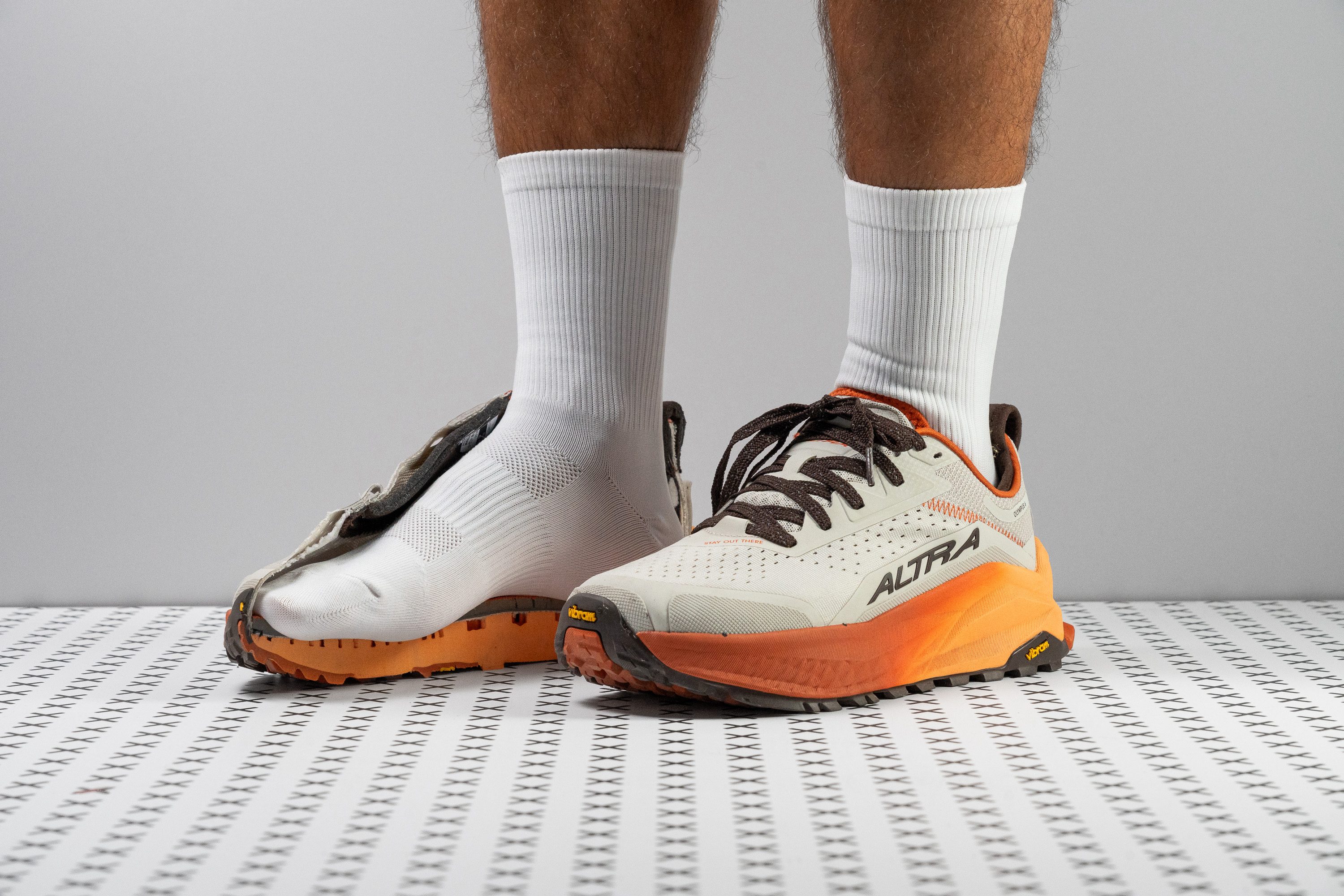

























































What makes it the best?
Our runs and lab tests verified the Altra Olympus 6 is the best trail running shoe for big guys. Its protective cushioning, stable ride, and grippy rubber kept us armed as we encountered various terrain conditions.
Our feet feel well-protected from ground impact, particularly in the 31.5 mm forefoot, 6.9 mm above average. Paired with a 32.2 mm heel, we measured a 0.7 mm drop which is amazingly close to its zero-drop claim. This setup naturally enhances stability, further boosted by the notable midsole sidewalls.
Its sticky traction in the outsole also contributes to our surefootedness. Featuring the world-class Vibram Megagrip with 3.5 mm deep lugs, we understood why Olympus 6 performed so well in our tests. Even against our Dremel, it showed an insignificant 0.8 mm dent, indicating durability won’t be a problem.
However, all the comfort and protection come at the cost of weight. At 12.6 oz (357g), Olympus 6 is 21.8% heavier than average. Those who seek a light and responsive ride should explore further.
Pros
- Outstanding durability
- Superior build quality
- Grippy Vibram outsole
- Exceptionally comfortable
- Real 0-mm drop
- Ready for the toughest adventures
- Spacious, foot-shaped toebox
- Premium quality materials
Cons
- Extremely heavy
- Slight price increase
- Lacks energy return
Running shoes for heavy men with the best value
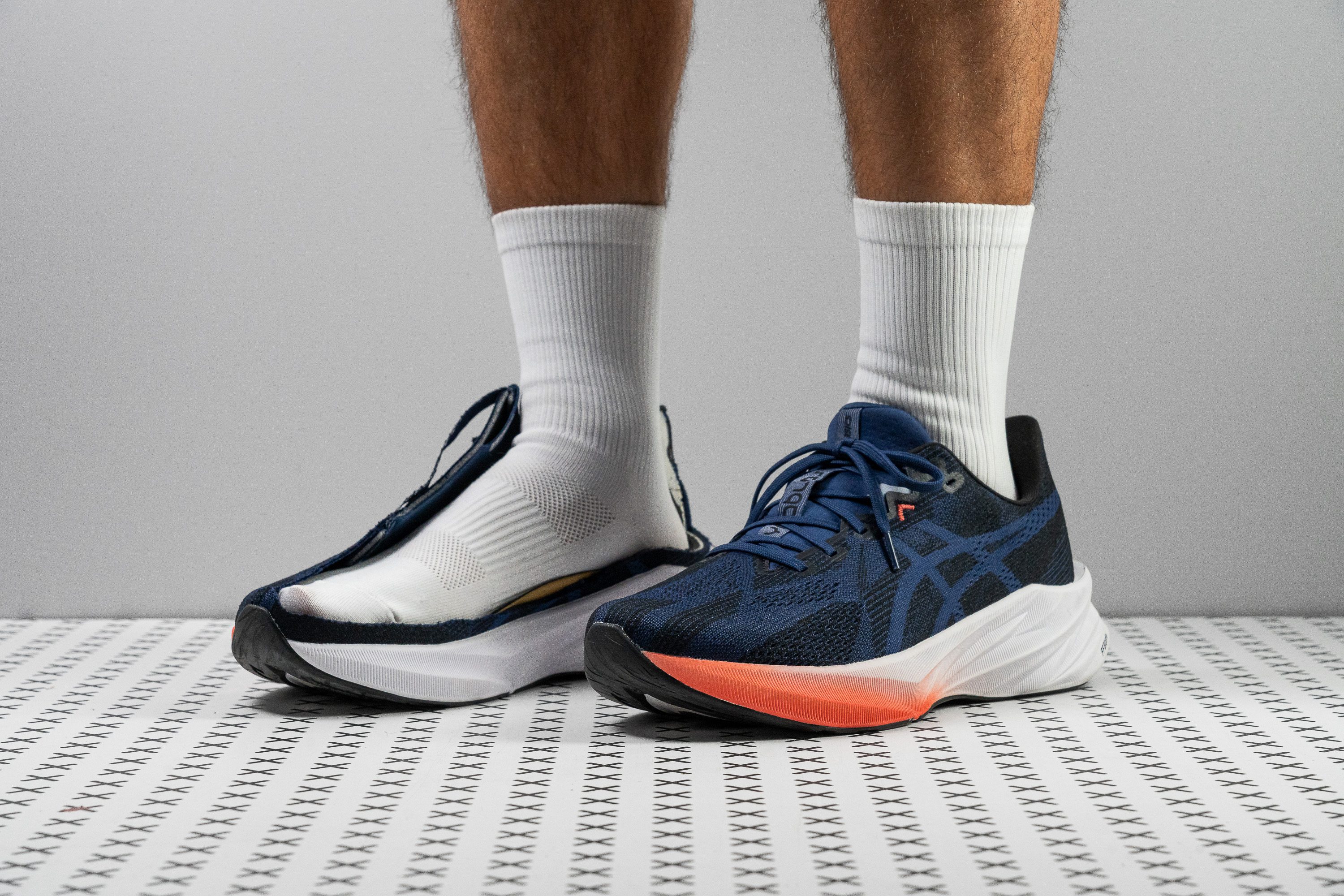












































What makes it the best?
ASICS Dynablast 5 delivers premium comfort in our runs through its superior impact protection and breathable upper. With a thick platform and a tough outsole that can take a beating, backed up by lab results, this shoe offers significant support to heavier runners. The awesome part is it’s only £120, making it the best value running shoe for big guys.
The main star is the highly-cushioned midsole, composed of a stack that’s 39.4/31.8 mm tall. Besides the generous material shielding us from the ground, the foam itself can reduce the forces of repetitive landing. In our shock absorption test, we recorded above-average scores of 156 SA in the heel and 127 SA in the forefoot, offering deep and lasting comfort for all foot strikers.
The jacquard mesh upper offers the perfect balance of ventilation and protection, smashing both breathability and durability tests with a 4/5 rating. Its performance is a rare feat in the lab since these two tests tend to perform inversely.
The outsole offers reliable grip and is tough enough for abrasions. It's thick at 3.6 mm and can resist wear 20.0% better than average.
Contrary to its name, Dynablast 5 offers low energy return and performs best in relaxed efforts. Those seeking a dynamic ride should skip this pair.
Pros
- World-Class shock absorption
- Maximalist cushioning at an affordable price
- Ideal for beginners
- High durability ratings
- Exceptional value
- Stable forefoot platform
- Drop suits all footstrikes
- Breathable upper
- Can handle long runs with ease
Cons
- Moderate-to-low energy return
- Heavier than Novablast 3
- Low volume toebox
How and why weight matters
Many runners don’t even think about their weight until it matters. What makes things a bit more complicated is the fact that, unlike in basketball, we don’t have heavy sportsmen promoting shoes or making shoes. In basketball, when a heavy player gets a shoe with their sponsor, you know it works for them. You see it works for them.
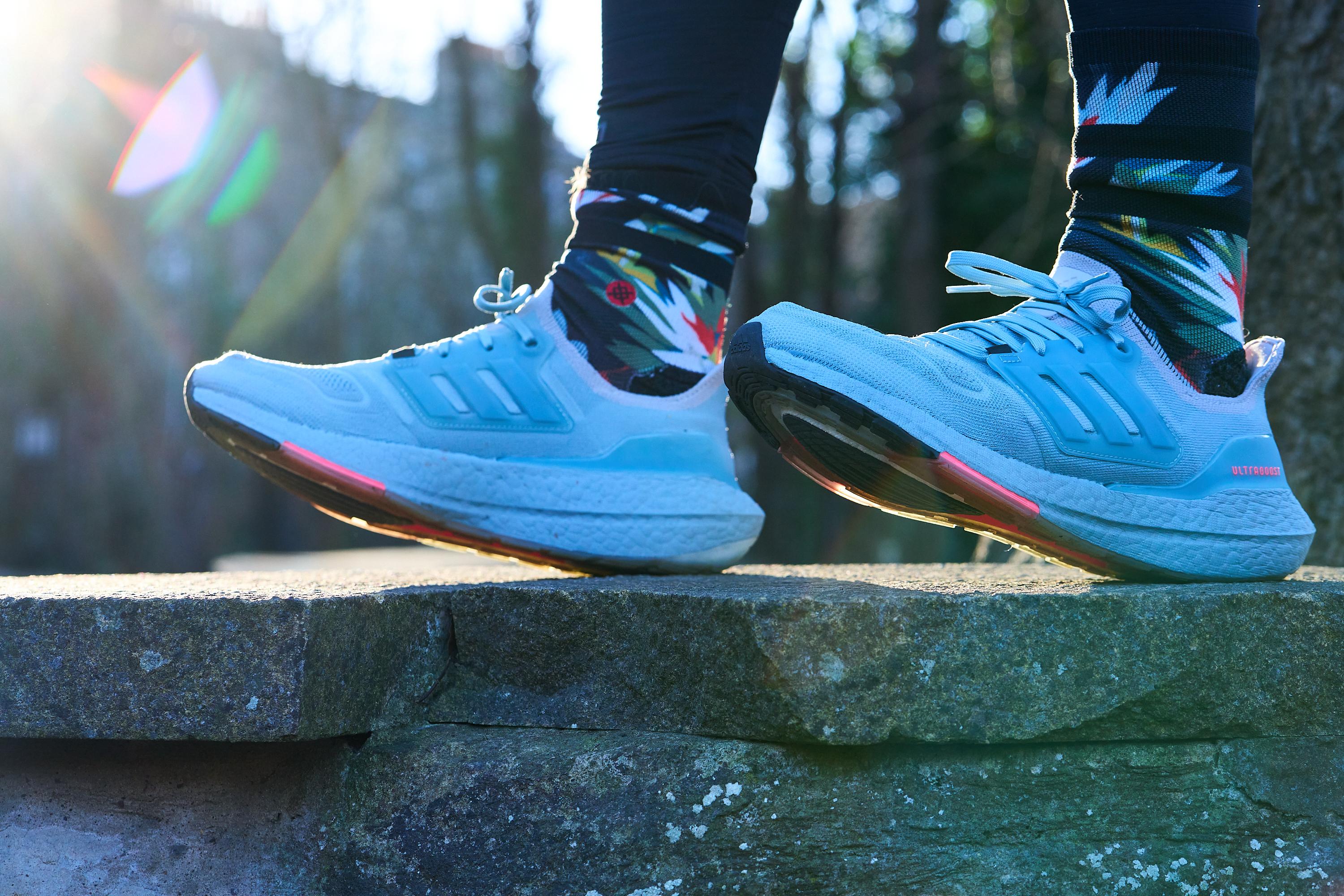
In running, we focus on features to explain why something does or does not work. The first time this was talked about more was when carbon-plated running shoes entered the scene. Simply, runners who were too light could not activate the carbon fibre plate, and runners who were too heavy could not benefit from the plated shoes as much as the fit runners due to their heavy heel strike or overall weight.
If you’re looking for running shoes with a carbon-fibre plate, best to first read how to go about it! For other, “regular” running shoes for big men, stick with us here.
The weight of the runners matters because more weight asks for more impact protection. The forces are then stronger at the landing so we should look for cushioning that can take it and keep your legs safe. Not just that, we should also look for durable outsoles. Constant beating takes a toll on the outsoles as well, especially when runners underpronate or overpronate, which means the wear and tear is uneven.
3 things to look for in running shoes for heavy runners
Heavy runners should prioritise 4 things to ensure their ride is comfortable:
- Impact protection that lasts: shock absorption of at least 120 SA at the heel
- Midsole that's not plush: best to find those that scored at least 20 HA on the durometer
- Stable ride: heel should be at least 90 mm wide when measured on the midsole (not on the inside).
Bonus points go for these as well:
- Durable outsole, especially if a runner overpronates or supinates so, at the landing, the forces are not distributed evenly
- Proper width of the shoe. Whether it’s just a wide toebox or the overall width of the shoe, it’s important to nail the comfort
We will cover all of these features in great detail below.
Shock absorption of running shoes for heavy men
When talking about cushioning, we often talk about stack height. But, when a heavy runner is running, what they should focus on more is shock absorption. This feature tells us how protective the midsole is or how good it is at dampening the impact every time we hit the ground.
In running shoes with high shock attenuation, the midsole is doing a great job of absorbing the forces, which means that significantly less stress is sent to our legs. On the other hand, when the shock absorption is low, it means our legs have to work more and potential consequences are muscle fatigue and even foot pain.
For heavy men, we recommend at least 120 SA of shock absorption at the heel.
Softness of running shoes for heavy men
Next, we look at the softness of the foam. We use a shore A durometer to measure how soft the foam is. This also has to be done on shoes that are cut in half.

Here, we recommend running shoes with foams that scored 20 HA or more on the durometer.
Durability of outsoles in running shoes for big men
As mentioned above, the durability of the outsole is important here, because the weight is not the only factor, but also whether you overpronate or underpronate. If so, you most likely land on one side of the shoe more and, because of that, the wear is stronger on that side.
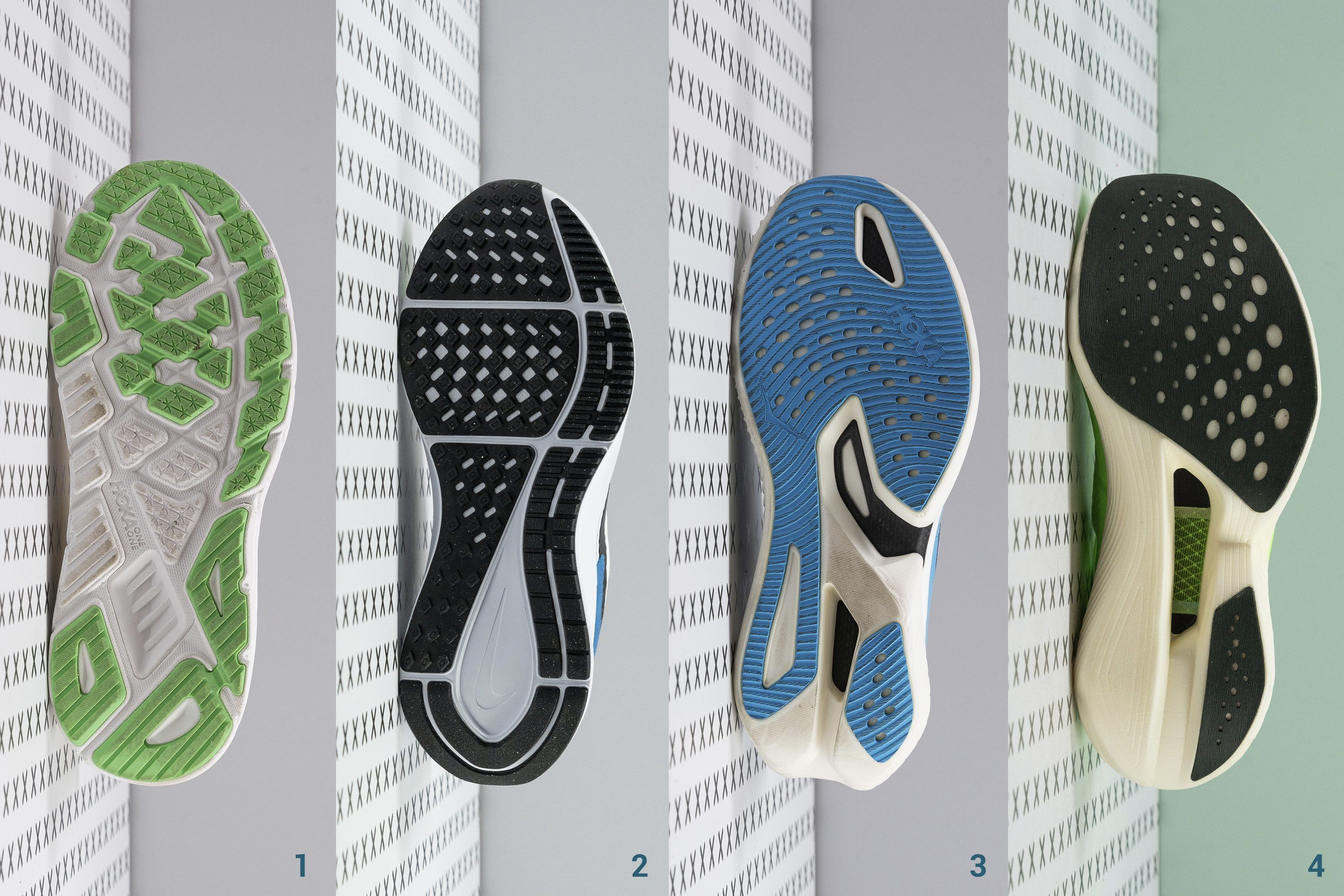
How long your outsole will last depends on the material type and its thickness. Thicker rubber will obviously last longer than thinner rubber.
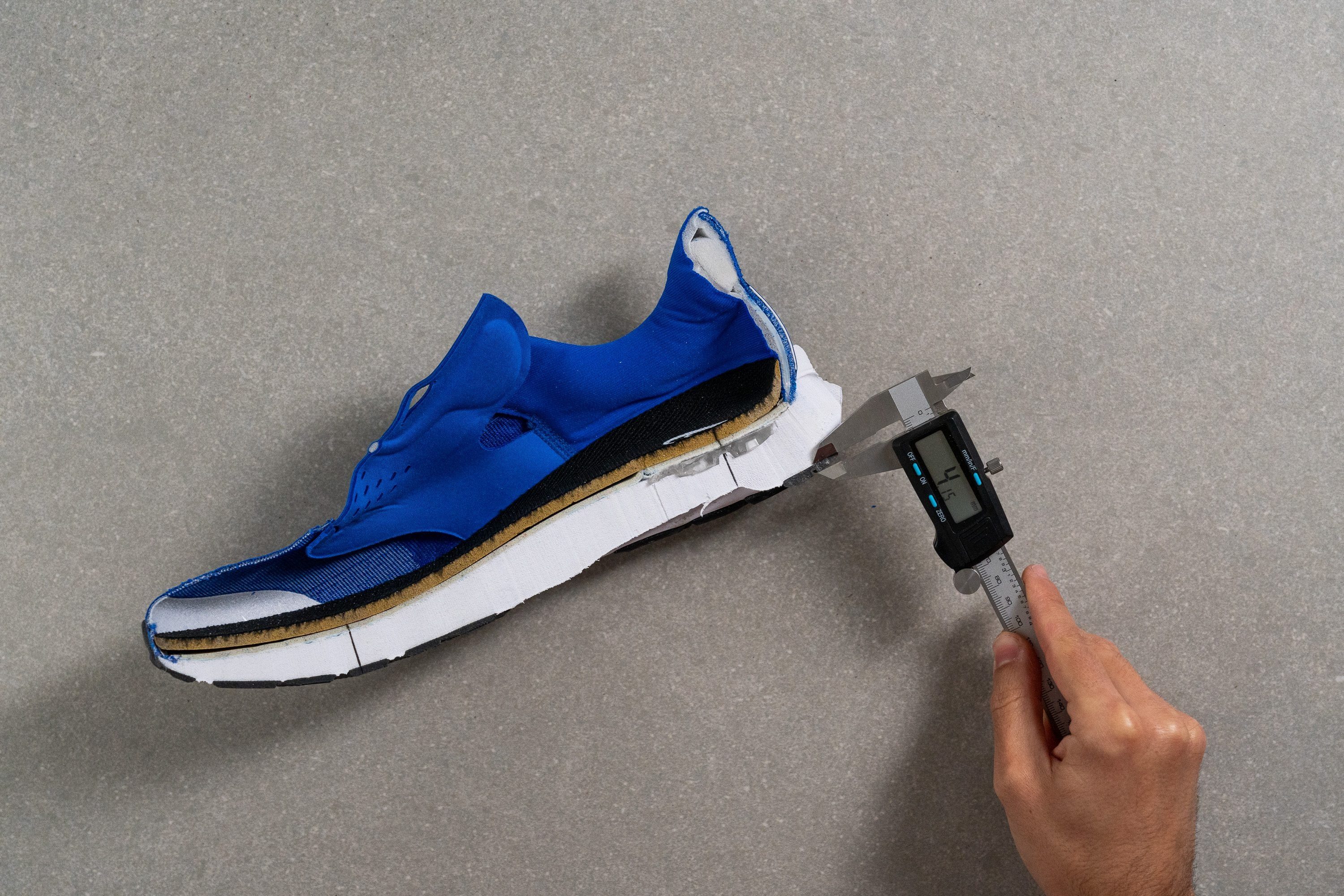
We also use a dremel to test the durability of the outsole. This test, like any other, is completely standardised, which means we always use the same force, RPMs, and time duration. That makes our results objective and comparable.
When this test results in a deeper dent, it tells us that the outsole is less durable. Vice versa, when the dent is shallower, it means more durability! We use a tyre tread gauge to precisely measure the dept of each dent.

Find a stable shoe if you’re a heavy runner
Stable shoes come in 2 forms: stability shoes for those who overpronate or stable neutral shoes for those with neutral pronation.
The stability of the shoe mainly depends on a) stability features like GuideRails or medial posts and b) the width of the base.

Best to look for running shoes that have a wide base because this will ensure planted landings and no wobblyness. We actually recommend a midsole width at the heel of at least 90 mm.
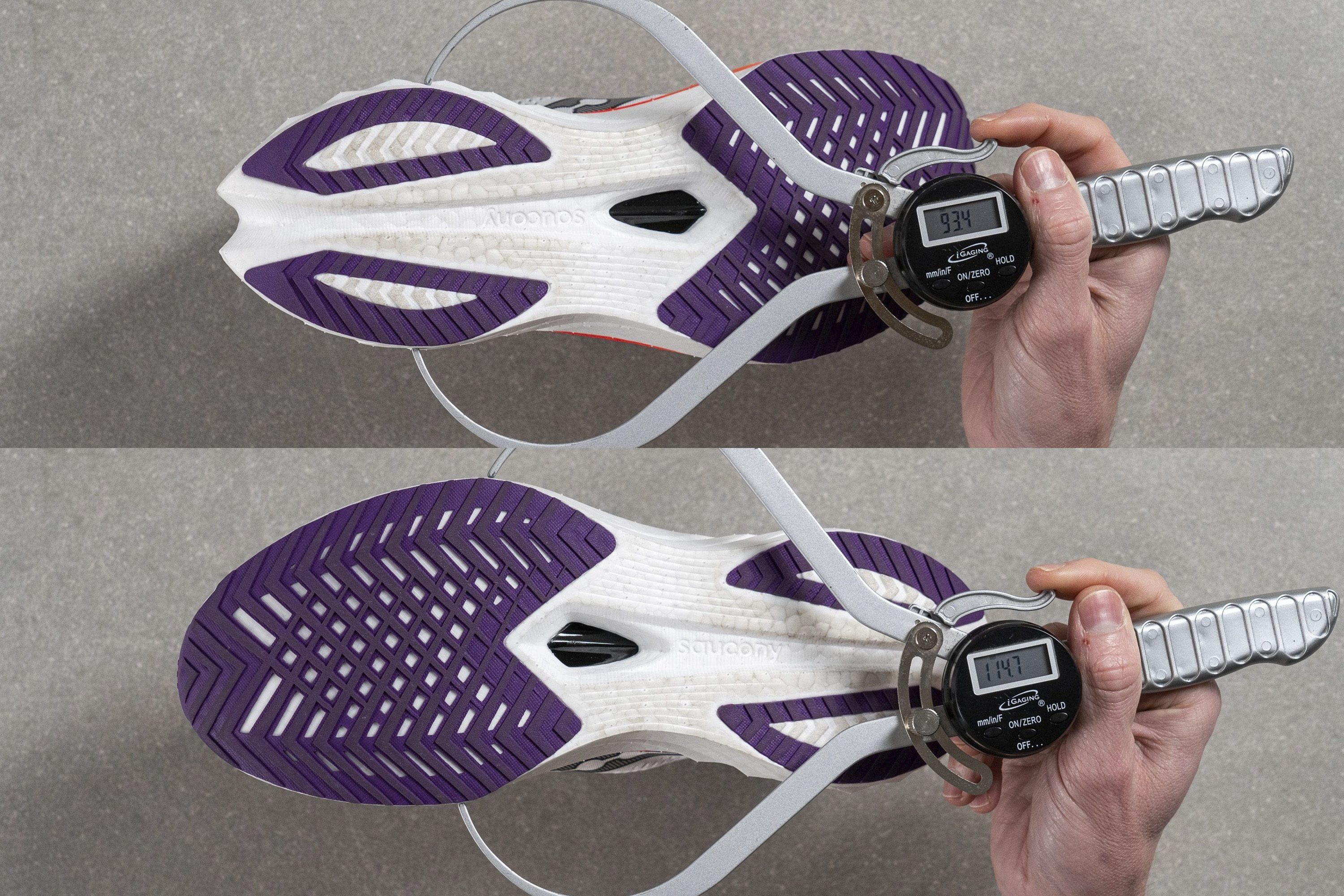
There are other elements that bring stability to running shoes, like sole flares, dual-density midsoles, stiff heel counters, padded heels.

If you’re a fan of stiff heel counters, you can always look at our test result: we squeeze and push heel counters and give them a 1-5 stiffness rating.
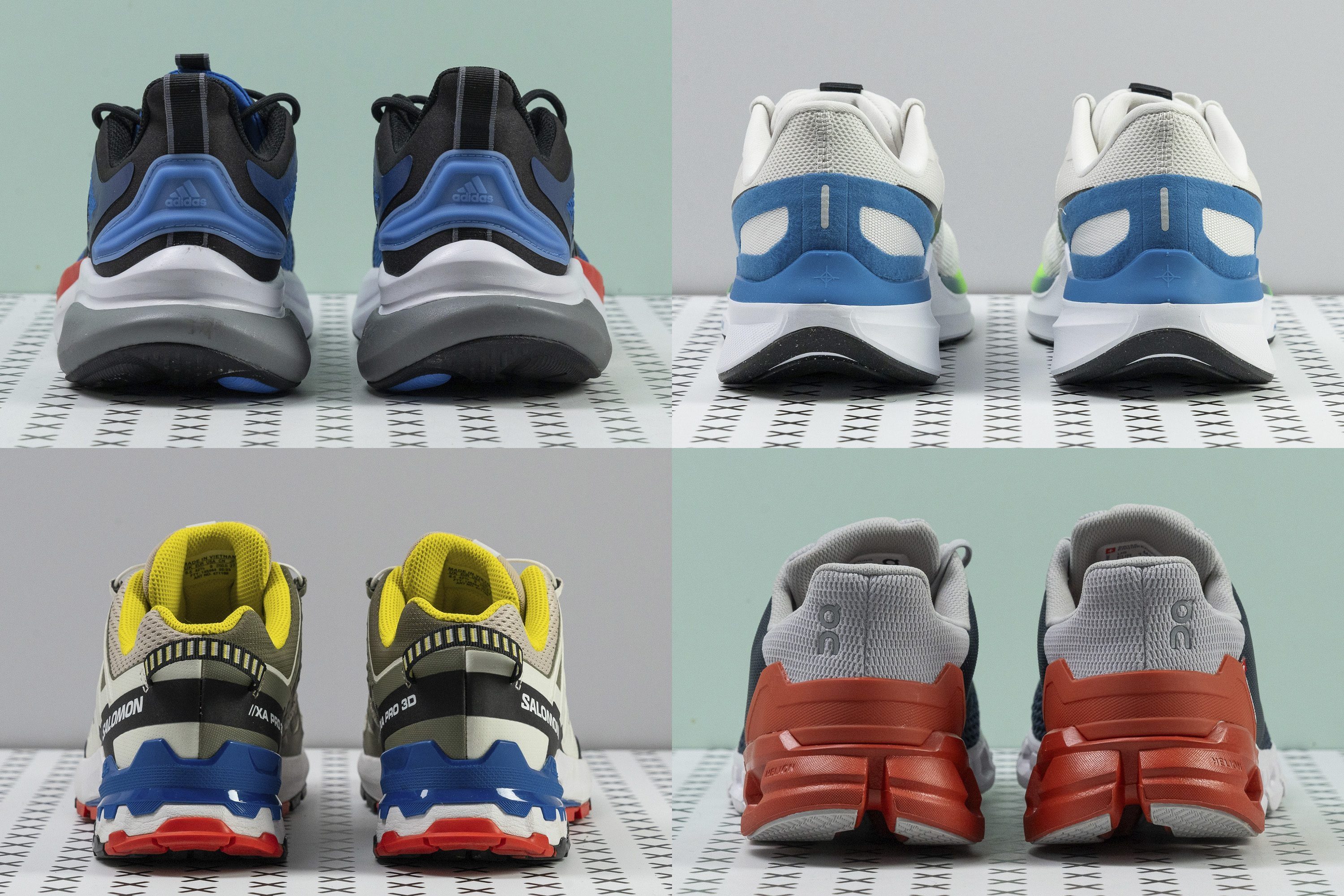

Width of running shoes for heavy men
We covered above the width of the base but here we’re talking about the internal width or how much room there is for your feet and toes.
It’s important that the shoe fits well which means it should not be tight and your toes should not be cramped. On the other hand, the fit should not be loose, there should be no sliding within the shoe to the sides, or to the front and back, and your heel should not slip.
Often, big guys need wider shoes. If you need wider shoes overall, look for Wide 2E or Extra Wide 4E shoes.
| Narrow | Medium/Standard | Wide | Extra wide | |
| Men | B | D | 2E | 4E |
| Women | 2A | B | D | 2E |
Industry labels for different widths of running shoes
Or, if you’re looking for a wider fit within the Medium/Standard width, you can consult our test results. We measure the width in 2 places: at the big toe and where it’s the widest. We always do so on a Men's US 9 D-width shoe.
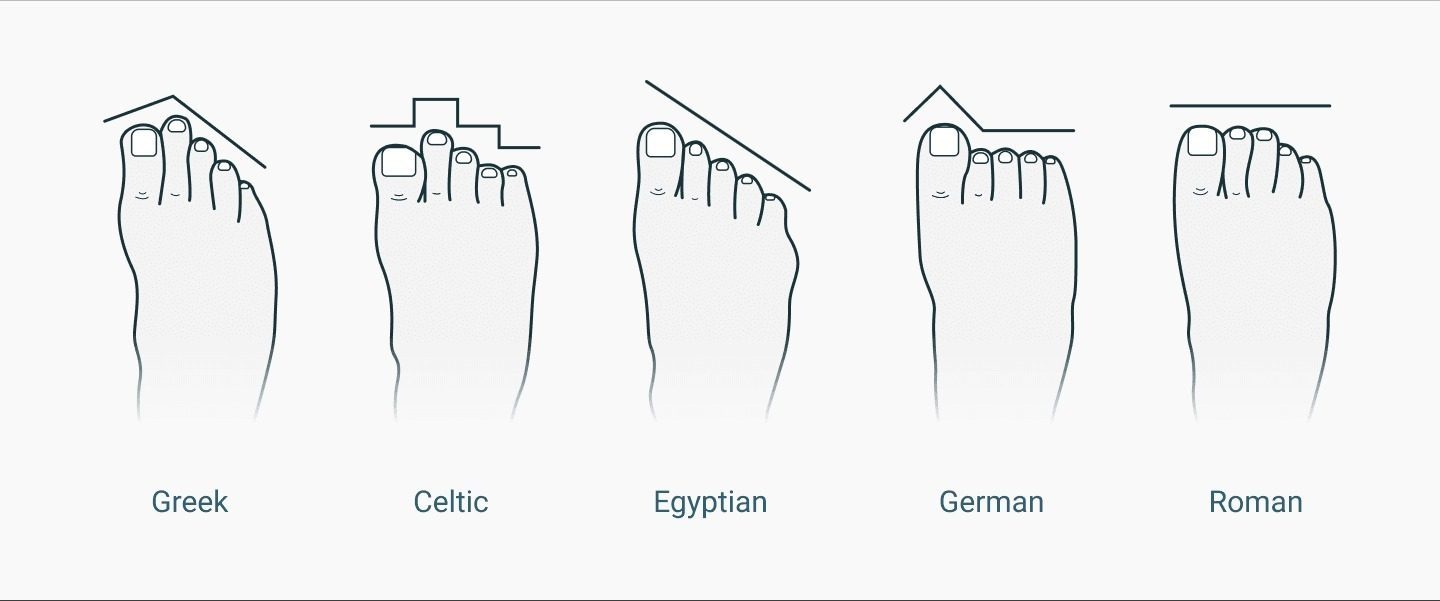
This allows us to understand which foot type the shoe will most likely fit well and also we learn how pointy the toebox is.
To get to those 2 measurements, first, we pour the gel into the running shoe and then freeze them together for 2 hours to create a gel mould
The gel mould hardens, so we can take it out and start measuring.
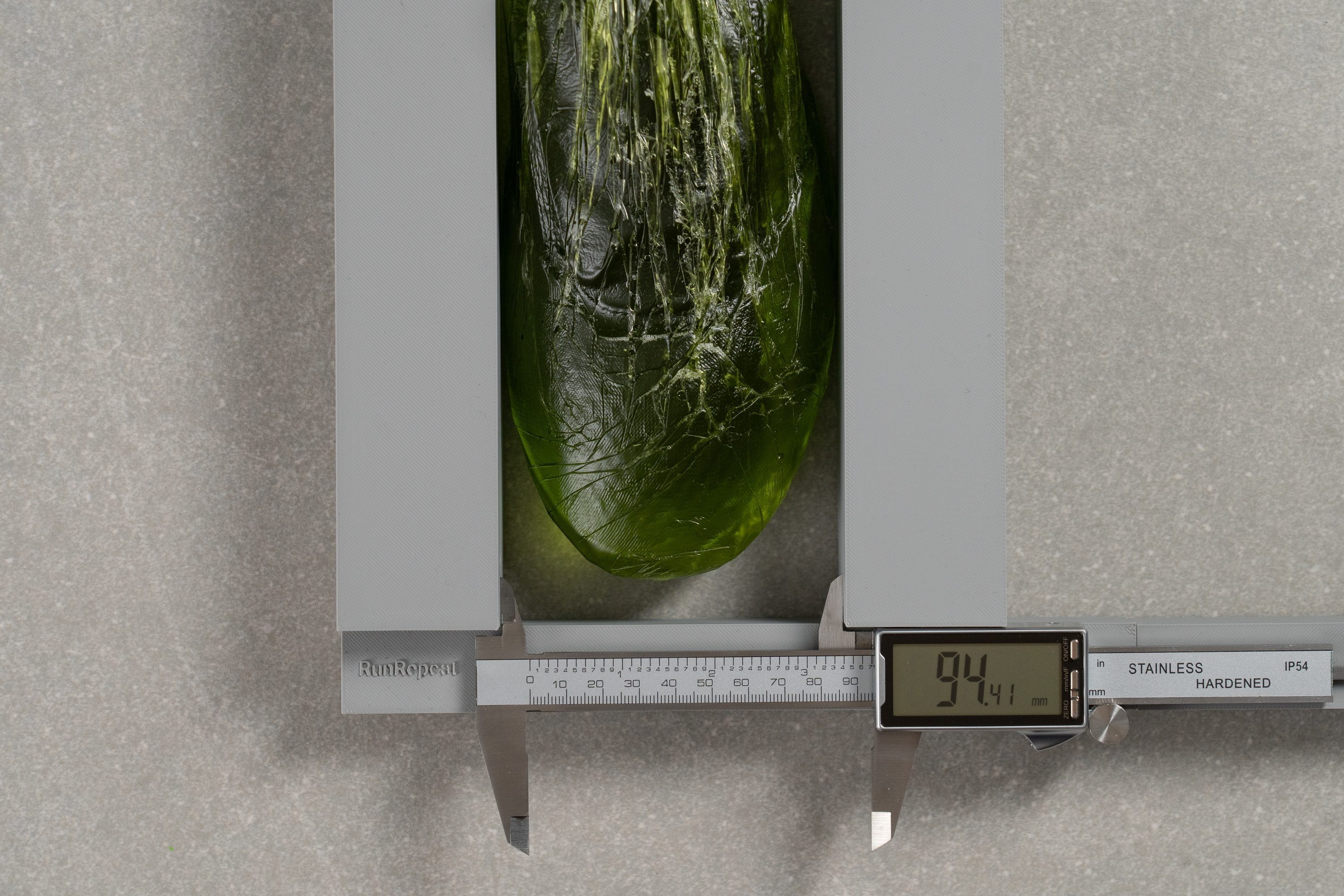

Knowing these 2 measurements can help you nail the width that you need. Pointy toeboxes are narrower at the big toe, while foot-shaped toeboxes are rounder.
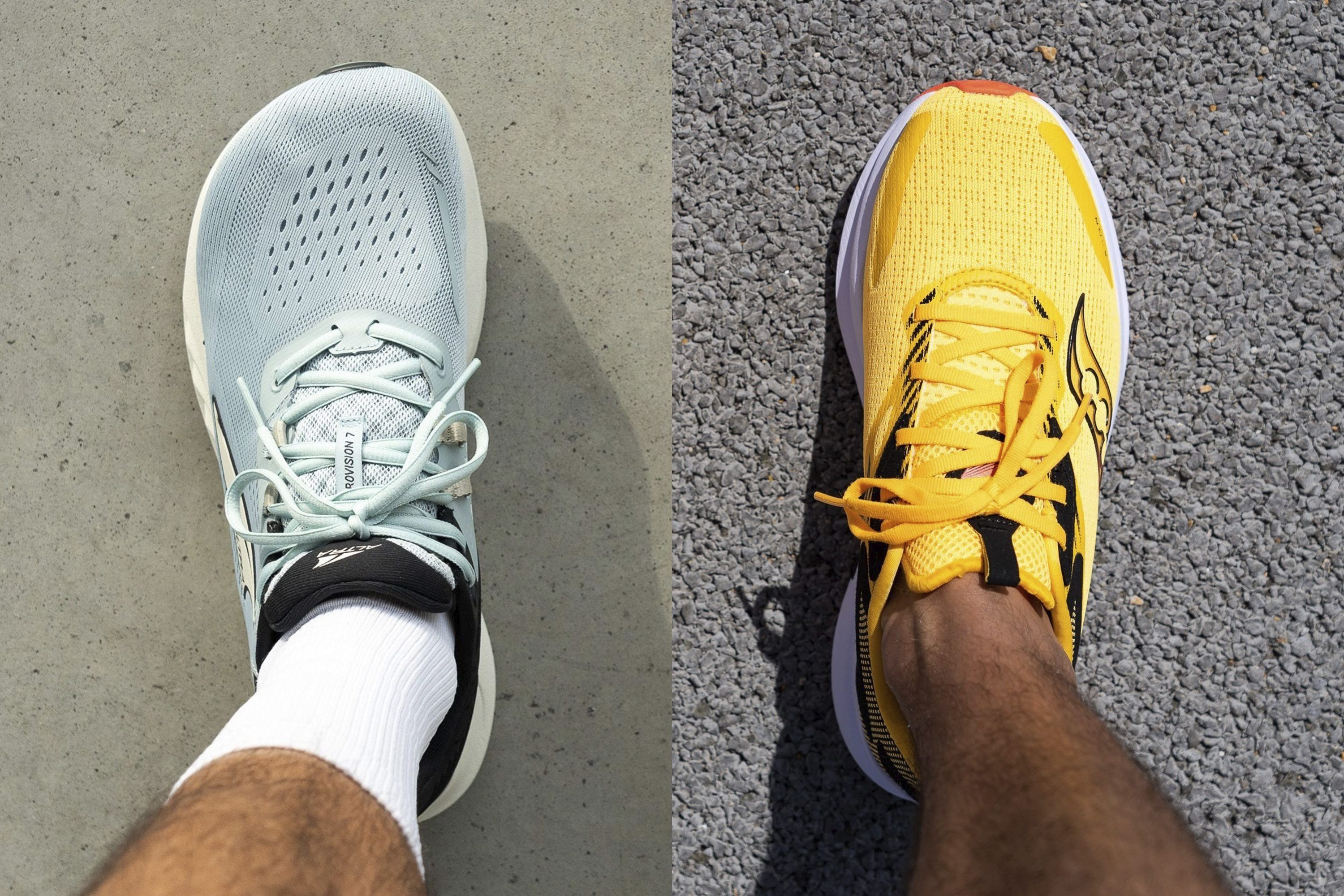
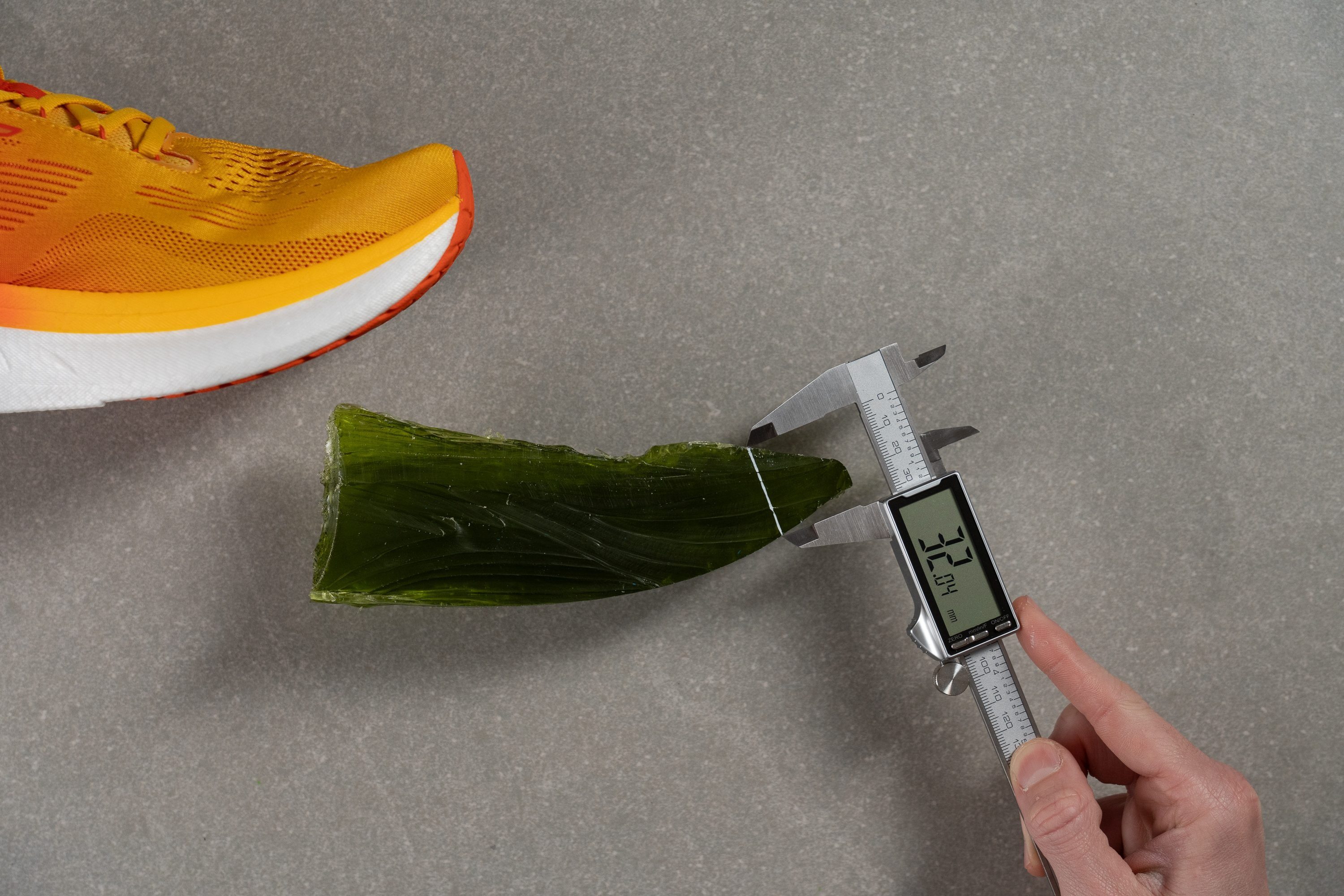
Paying the price in weight and breathability
Unfortunately, when we take into account what’s great for heavy runners, the price can be paid in the shape of a) excess weight or b) lower breathability ratings. This is natural, more materials like foam, padding, layers, and rubber, mean more weight and also worse breathability.
Summer or winter: how breathable do you want your running shoes to be
In our shoe lab, we pump the smoke into the shoes and then watch where the smoke comes out and at which pace. Based on this, we rate the breathability of shoes on a 1-5 scale, where 1 is the least breathable and 5 is the most breathable.
It would not be fair to say that getting the 1/5 is bad. It’s actually cold-weather-friendly! In cold weather, you want the heat to stay inside so that your toes do not freeze. And, in summer, we want all the breeze we can get.
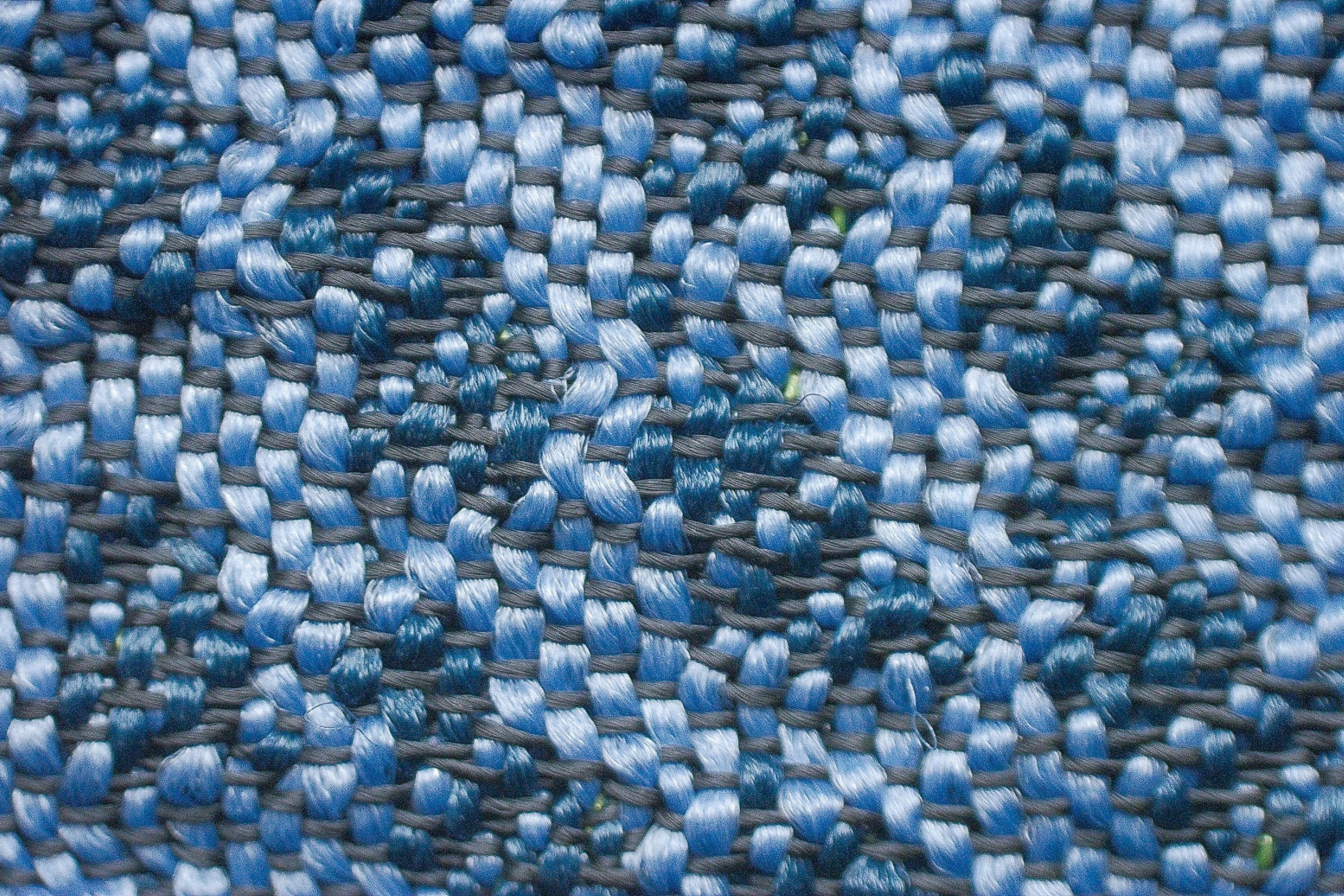
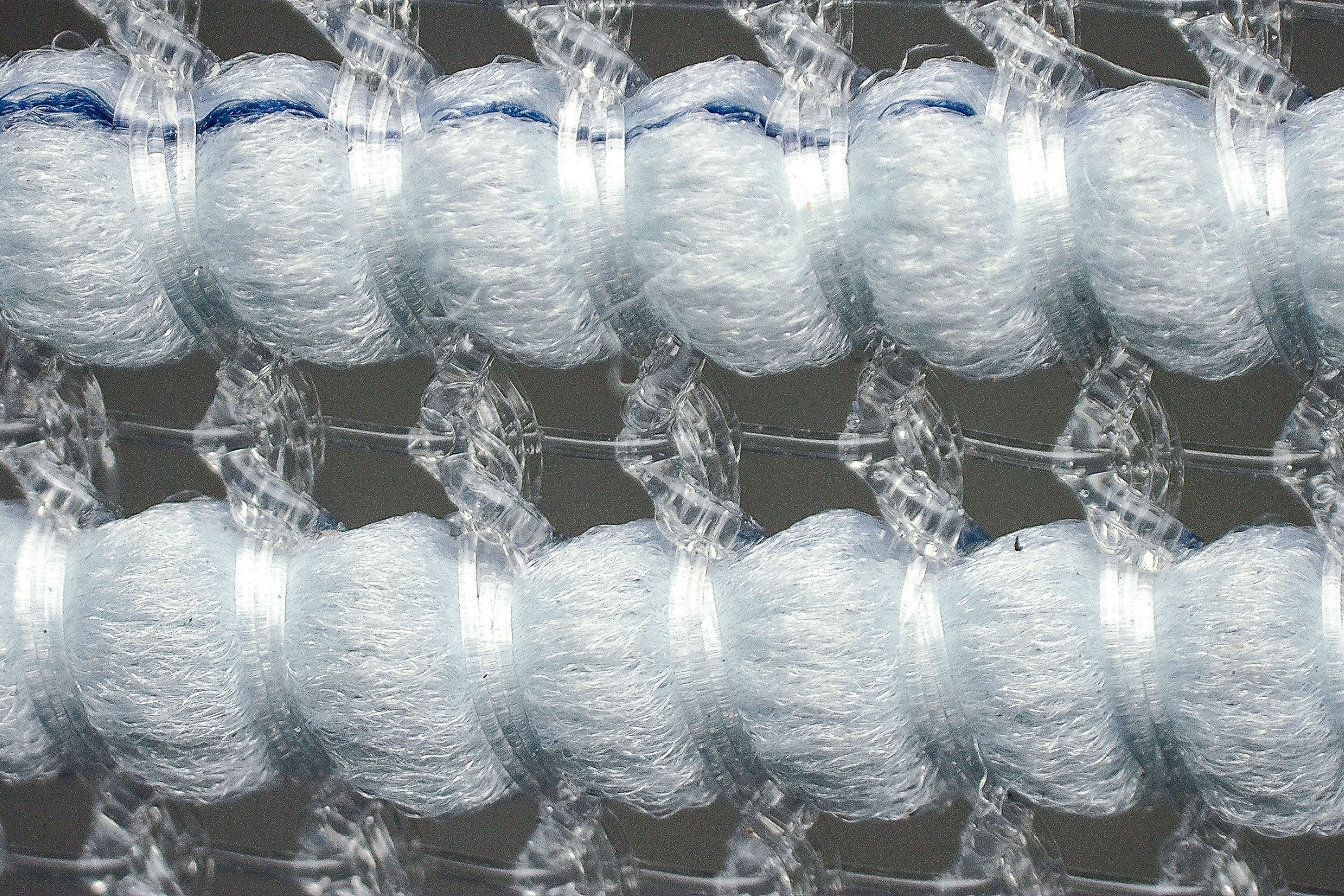
Weight of running shoes for big men
When we list all the features that could come in handy: more cushioning for superb impact protection, more rubber at the outsole for a better grip and stable landings, more padding for that perfect locked-in feel, maybe even a plastic heel counter, and so on, we end up with a lot of wanted features and they all carry some weight.
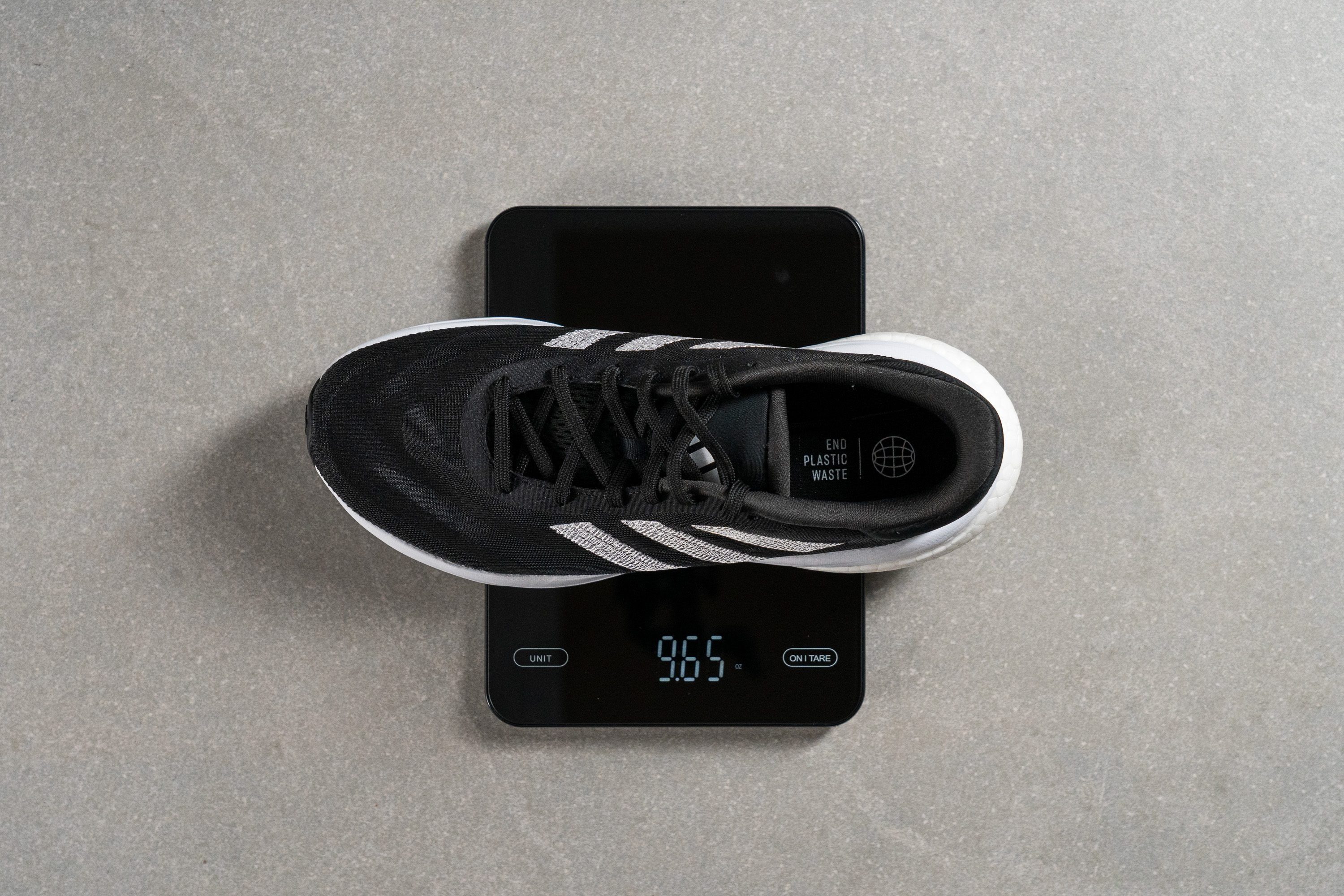
Because of this, it’s best to understand what you want to use the shoe for and wether you’re ready to carry maybe some extra weight but get more needed benefits in return.
Based on our current data, the average weight of running shoes for big men is 296.8g or 10.5 oz while the average weight for all shoes in our database sits at 265.3g or 9.4 oz.
Trail shoes for big guys
As with road shoes, it’s best to look for stable platforms and prioritise cushioning over the ground feel.
